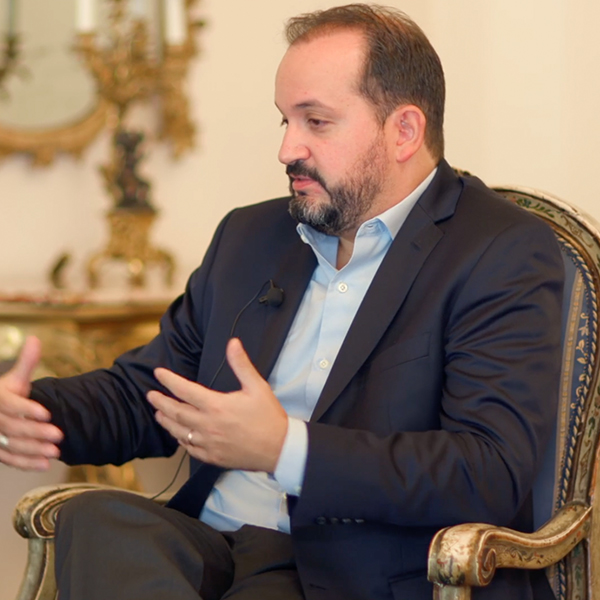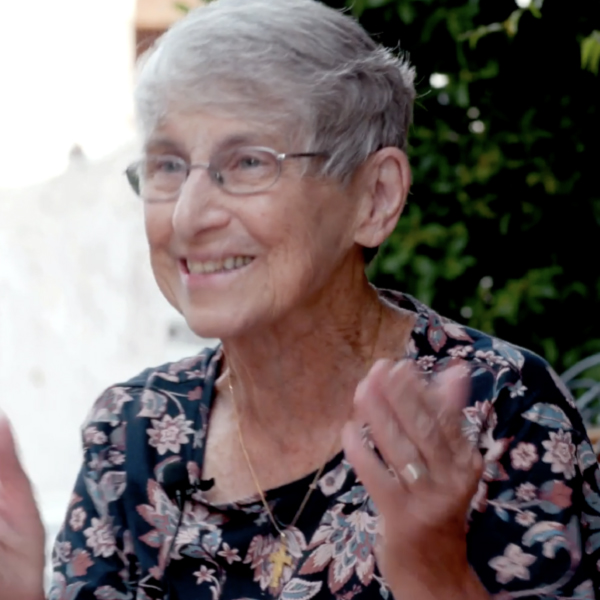Discussion with Dr. Charles Flynn on the historical origins of the Foundation
Address Transcript
We’re in Assisi, to give life to the St. Francis Day Foundation. To explain, let’s go back.
In 1962, the world came close to nuclear winter and the annihilation of all human life. During the Cuban Missile Crisis — the United States and the Soviet Union were on the brink of nuclear war. The Pope, Saint John XXIII, served as an intermediary between the United States and the Soviet Union bringing reconciliation and peace — or at least agreement.
In the wake of that crisis, Pope John wrote the encyclical, Pacem in Terris — Peace on Earth. Some people call it his will and testament, for he died only two months after it was issued. In it, he explained how true peace could only come through authentic agreement where nations, countries, governments recognize the dignity that all human beings share, the equality that all human beings deserve, where citizens recognize the legitimate authority of their governments, and governments can reach agreement through negotiation rather than through war.
Pacem in Terris was the first encyclical ever addressed to “all people of goodwill,” rather than to bishops or to Catholics or to Christians. In John XXIII’s view, the papacy could provide moral leadership without regard to denomination or faith. In addressing “all people of goodwill,” John XXIII, remember, was repeating the greeting of the angels at Bethlehem. They announced the birth of the Savior to all people on earth, all people of goodwill.
Only two encyclicals since Pacem in Terris have also been addressed to all people of goodwill, the two encyclicals written by Pope Francis, Laudato si’ and Fratelli tutti. Through those encyclicals, Pope Francis is continuing to model his papacy after the papacy of John XXIII. He is addressing those encyclicals not only to members of the hierarchy, not only to Catholics, and not only to Christians, but to all of us, to all people of faith and without faith. Like peace, the challenges he outlines confront us all individually and together.
These encyclicals do not provide a list of action steps. They are not a manual for how we can accomplish what we need to accomplish. They are meant as instruction rather than as guides. With Pacem in Terris, they raise for all people everywhere the defining questions of the modern era. How do we live in community and act meaningfully for the common good.
In Laudato si’, Pope Francis is outlining the dangers of indifference to the beauty of God’s creation, and the ways in which our actions as individuals — and communal action as groups — are having a profound destructive effect on human health, human life, and the well-being of our communities. He is saying that the dangers human action pose for our home on this earth are as great as the danger of war and nuclear winter.
In both encyclicals, Pope Francis addresses human ecology. By this term he affirms the correspondence between how we treat our earth and how we treat each other socially, economically, politically, and individually. Laudato si’ and Fratelli tutti both challenge us to effective action and to a way of life sanctified in the common good.
Again, like John XXIII, Pope Francis cautions us that unless we weigh the moral and ethical consequences of our actions, our way will not only be lost, our destruction may be ensured. The St. Francis Day Foundation is a response to the Pope’s call to moral and ethical responsibility and effective action individually and with each other.
The challenge is comprehensive. Action is specific.
The St. Francis Day Foundation, like Pope Francis, has a special interest in migrants and refugees. Whether children or adults, women or men, migrants and refugees are resourceless, powerless, and vulnerable. They do not matter more than other people, but as the Pope suggests: if the powerless do not matter to us, who then could possibly elicit our compassion? If we cannot rouse ourselves to meet powerless and vulnerable people with mercy, who then can we embrace? Is this not a succinct edition of Christ’s message?
Laudato si’ and Fratelli tutti posit defuse cultural challenges that the St. Francis Day Foundation will seek to address, as well. For example, technological innovation promises enormous benefits and the relief of much suffering, but does not this “information age” dangerously intensify the pace and cultural consequences of change? Does the abuse of information technology not metastasize the perils of personal isolation, self-absorption, and deceit; dissolve confidence in Truth; and even hide from us individually and communally the consequences of our own actions? If we let technology drive us instead of being thoughtful and making the choices about the ways in which it is employed, what happens to our children? What will happen to our communities? Will we not be adrift and our communities Darwinian rather than compassionate?
Pope Francis models his papacy after the papacy of John XXIII, but both of them looked to their predecessors, to the greatest traditions of the Church. Pacem in Terris is written in the light of natural law — the ways in which the mind of God is revealed through the beauty of creation. So, too, in Pope Francis’s encyclicals, look to the ministry of Saint Francis of Assisi and Biblical texts to remind us of St. Francis’s coherent message of peace, goodness, generosity, and love—to remind us of the wonderous beauty of God’s creation in nature and in our own hearts.
It is not a simple set of challenges. Pope Francis is clear. They are existential challenges for us as individuals and as members of communities. They cannot be successfully addressed by legislative acts alone. They must be addressed as matters of individual and shared conviction and responsibility; they require compassion as well as action. Therein lies the purpose of the St. Francis Day Foundation.



